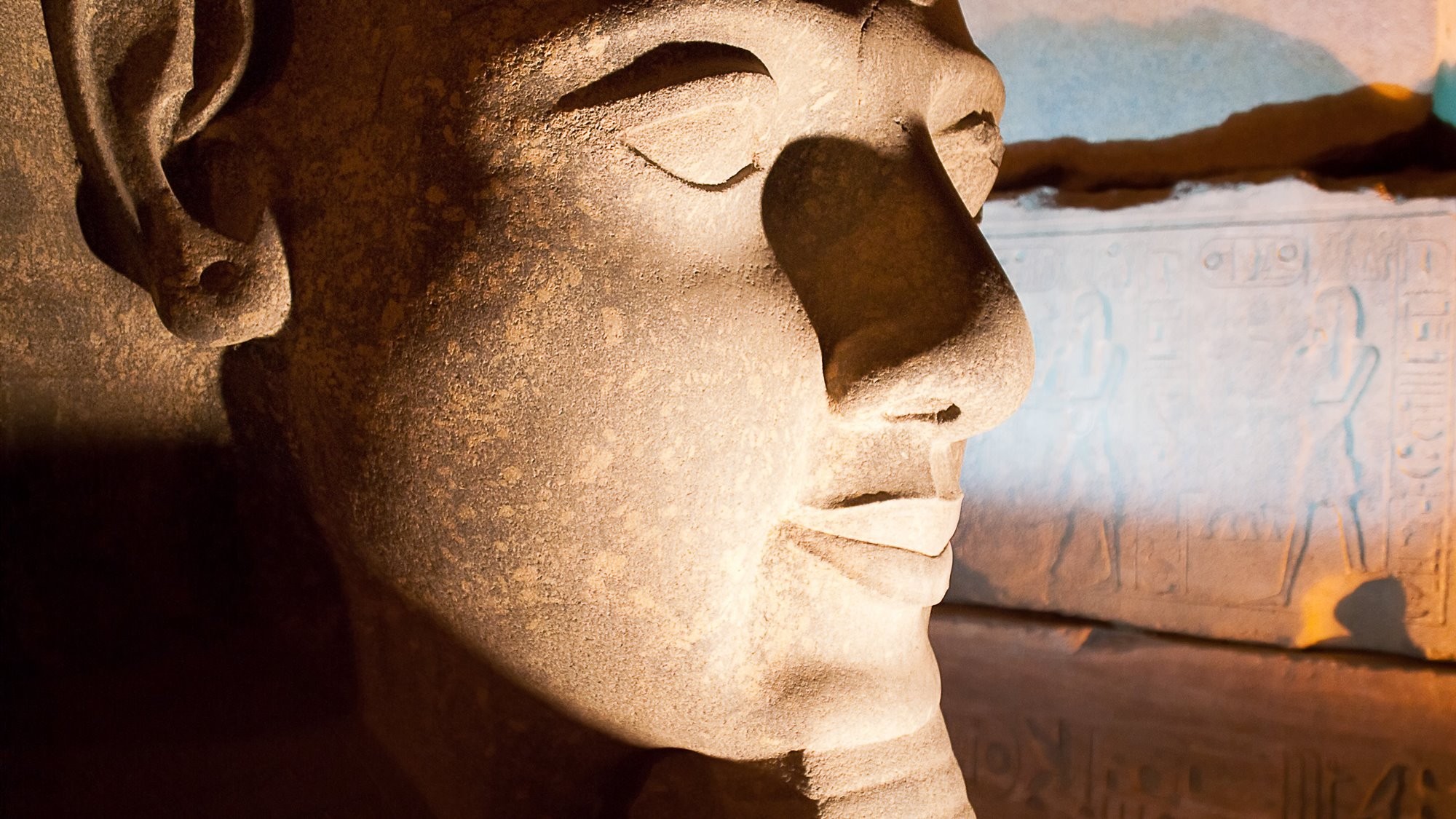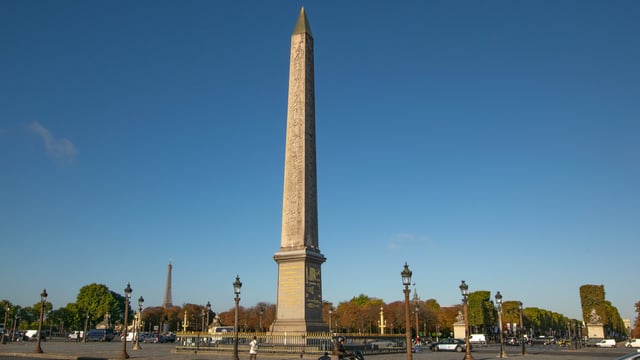When the glass pyramids were added to the courtyard of the Louvre Museum in 1989, they divided opinion. Whatever your thoughts, they are now as synonymous with the Louvre as Da Vinci’s Mona Lisa is. Further along the ‘Axe Historique’ is the ancint Egyptian obelisk on Place de la Concorde. In fact, the streets of Paris have numerous references to ancient Egypt. These reflect a complex relationship the West in general and France in particular have had and continue to have with Egypt and her past. Here I list some of the best known examples of Egyptian Revival Architecture in Paris.
- Thomas Dowson
- Last Checked and/or Updated 24 March 2023
- No Comments
- France Travel Ideas, Paris, Street Sightseeing
The West’s interest in ancient Egypt goes back to the Greeks and Romans. The raising of ancient Egyptian Obelisks in Rome during the 17th century inspired the raising of obelisks in Ireland for example. Neoclassical rends in the 18th century often mixed Greek, Roman and Egyptian features. There was no attempt to faithfully reproduce ancient buildings, rather to create a new style.
The systematic study of ancient Egypt owes a lot to Napoleon Bonaparte’s military campaign in Egypt and Syria between 1798 and 1801. Besides the obvious military personnel, Napoleon’s army included over 167 scientists. Their presence was intended to help the army, but soon they began to describe and illustrate the country’s natural resources and cultural heritage, from the geology, flora and fauna to the various ancient structures they encountered. Napoleon’s scientists published their findings as Description de l’Égypte, which gave rise to a deep fascination with all things Egyptian. A fascination that cropped up everywhere, including on the streets of Paris.
Over a century later, the Art Deco movement and the 1922 discovery of Tutankhamun’s tomb initiated a renewed interest in ancient Egyptian aesthetic.
Place du Caire and the 'Retour d'Egypte', 1799
On 29 July 1798, Napoleon Bonaparte entered Cairo. In a square where a convent had been destroyed during the French Revolution, Parisians chose to mark the occasion with references to Cairo. The square became Place du Caire, with an adjacent road called Rue du Caire.
One of the buildings erected then was heavily decorated with ancient Egyptians themes. Not all accurate. The most striking of these are the heads of Hathor, with her distinct bovine ears. These closely resemble such sculptures found in many of the temples dedicated to the Egyptian deity. Besides the reproductions of Hathor there are many other Egyptian styled features on the façade. An frieze of low relief images include Egyptian styled men on chariot. The columns on the ground floor have typical papyrus-styled capitals. Below the curved cornice at the top are images reminiscent of hieroglyphs. Although the human profile with the exaggerated nose is said to be of Henri Marcellin Auguste Bougenier.
The building has been named Retour d’Egypte. It has an arcade through it, named Passage du Caire, that leads to the Foire du Caire – which is of course nothing like a Cairo market. Not only is this the oldest covered arcade in Paris, it is also the longest and narrowest.



Hôtel De Beauharnais, Circa 1806

Today the Hôtel de Beauharnais is the residence of the German Ambassador to France, having been in Prussian and then German ownership since 1811. Although built in 1710, the porch to the entrance was added around 1806. The various features of the porch have decoration that has very obvious Egyptian influences. The two central columns, for example, resemble columns you might see in an Egyptian temple, even topped with lotus flowers. The exterior walls are decorated with Egyptian style imagery.
Fontaine Du Palmier, Place Du Châtelet – 1806-1808

At the centre of Place du Châtelet is the Fontaine du Palmier, which draws on a number of different ancient influences. Four clearly Egyptian-style sphinxes, that each spout water from their mouths, sit at the base of a Roman-style triumphal column. The column, the largest surviving fountain built during Napoleon’s reign, celebrates a number of Napoleon’s victories around Europe, including the Battle of the Pyramids. The fountain basin and the sphinxes were added to the column in 1858 under orders of Emperor Louis Napoleon.


Fontaine Du Fellah, Rue De Sèvres – 1806
Just beside the entrance to Vaneau metro station is an attempt to replicate an Egyptian temple. Originally erected against the exterior wall of a hospice, today the Egyptian-influenced structure is all but a building site, with a high rise being constructed around it. Within the cavity of the temple is the statue of a fellah, a peasant, dressed in obvious Egyptian costume, who when the fountain was in working order poured water from a pitcher in each hand. The statue is said to have been based on a Roman statue of Antinous, Roman Emperor Hadrian’s lover. This is another fountain that was intended to celebrate Napoleon’s victories in Egypt.
The Glass Pyramids at the Louvre

Of course, as well known as they are, no list on Egyptian Revival Architecture would be complete without the glass pyramids at the Louvre. These once futuristic now iconic glass pyramids are a testament to the continued fascination ancient Egypt has for France, and her many tourists who come to the Louvre to see some of the best collections of ancient art and artefacts in the West.
Architectural History Guided Walking Tours of Paris
Create Your Own Itineraries & Travel Lists for Paris
You can create your own travel lists (such as places you have been to, places you would like to visit) and itinerary for your Paris visit. These can also be shared with your friends and on social media. To make use of this feature, you will need to login or register as a new user. For more sites and museums in Paris and Île-de-France, see our Paris City Guide and our A – Z of Art, Archaeology & History Sites & Museums in Paris & Île-de-France.
Palais du Louvre - Louvre Museum
Now one of the most famous museums in the world, the Louvre was a Royal residence. A 12 century fortress became a residence for Charles V in the mid 14th century, when he abandoned the Palais de la Cité. Since then it the principle residence of kings of France until the French Revolution, when parts of it became a public museum. The museum now occupies the entire complex. Collections include art and antiquities from France and Mediterranean Europe (Etruscan, Greek and Roman). There are also substantial collections of Egyptian and Near Eastern antiquities, from late prehistory to the start of Christian and Islamic periods.





